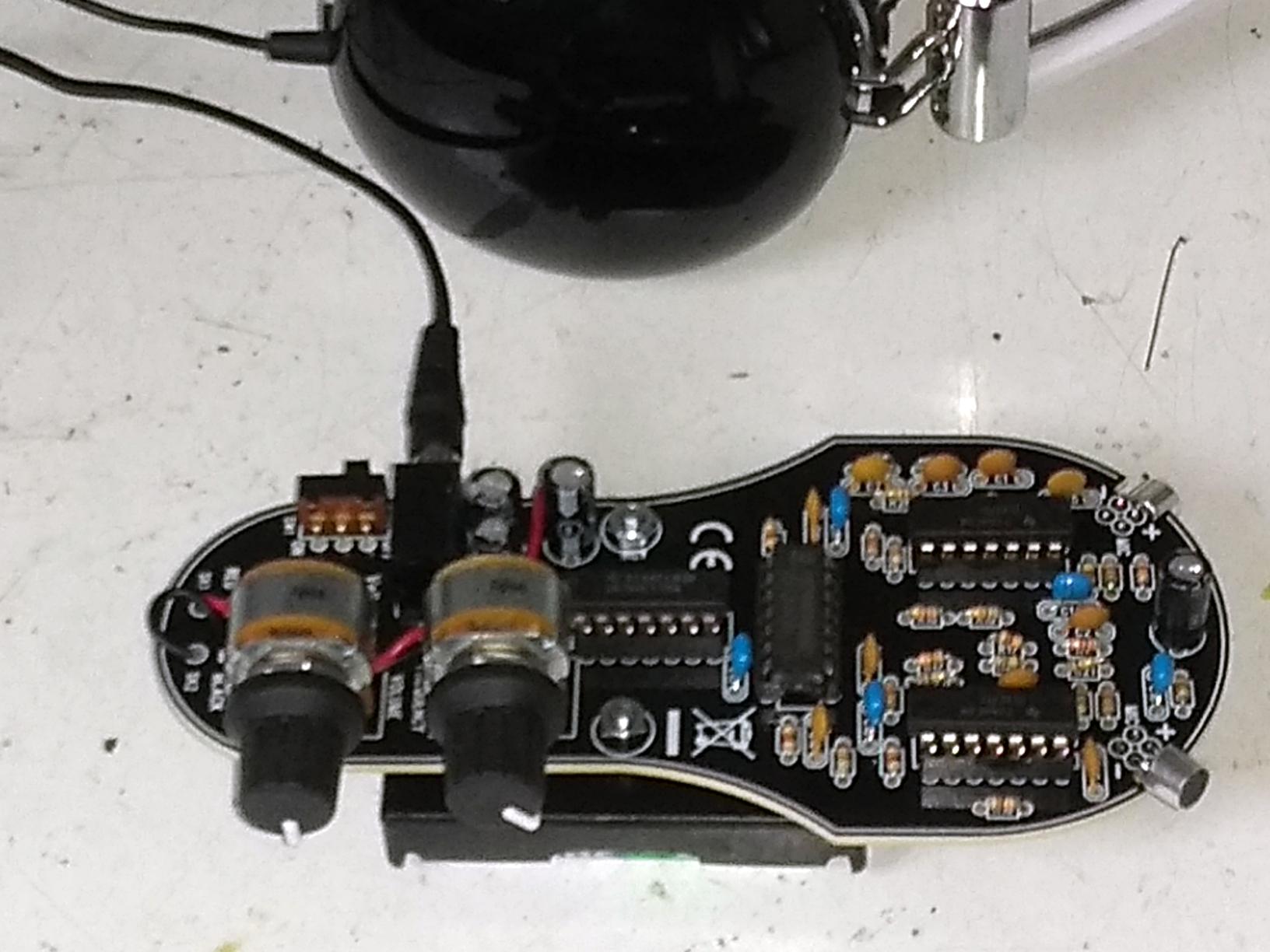
552
Item nr.

Heterodyne ultrasound observation
| Production | The Netherlands, 2021.
Price was €31. |
|---|---|
| Bands | Conversion range 19-85kHz. |
| Semi- conductors | 2x TLV274 (quadruple opamp), 74HC4066 (quadruple switch), 74HC14 (6-fold inverter). |
| Cabinet | None. Size 13x6cm. |
| Power | Batt 3xAA @ 8mA. |
| Documents | Schema, Assembly instructions. |
Circuit description: The 3 AA batteries (4.5V) supply the four IC's, a power on indicator LED through a resistor, and a divider for the input bias of the opamps.
The elektret mikes are DC supplied via resistors and feed their signal to the first opamp through a 100p capacitor. After the preamplification follows a second amplification stage, and a third opamp serves as phase inverter, to make the signal of both mikes available both in positive and negative phase.
Heterodyne mixing is done in the switch IC, controlled by an ultrafrequency oscillator. The oscillator is just an inverter, fed back through an RC circuit; a second inverter provides provides the other phase of the oscillato signal. The oscillator signal is used to switch between positive and negative phase of the sound sinal, effectively multiplying the mike signal with the oscillator signal. Via a low pass filter, volume control, and final opamp, the resulting audio signal goes to the headphones.
The looks: Ultrasound coverting mikes are a useful tool in various applications, one of them being bat detection. So Velleman designed this in the shape of a bat body with the mikes in the place of ears. No cabinet is provided. Also, the oscillator frequency control is not calibrated or even indicated.
Detection range: The microphone signal is fed through a high pass filter that suppresses audio frequencies to approximately 20kHz, ultrasound between 20 and 100 kHz goes to the mixer. All sounds that differ an audible frequency from the oscillator, will be heard. So, for example, a person who can hear sounds up to 8kHz, with the oscillator at 60kHz, will hear the ultrasound in the range 52 to 68 kHz, where sounds at the ends of the range sound high and frequencies near the oscillator frequency will sound low.
| Obtained | 6/2021 from Bol.com, home assembled. |
|---|---|
| Condition | 9. |
| Value (est.) | 15€. |